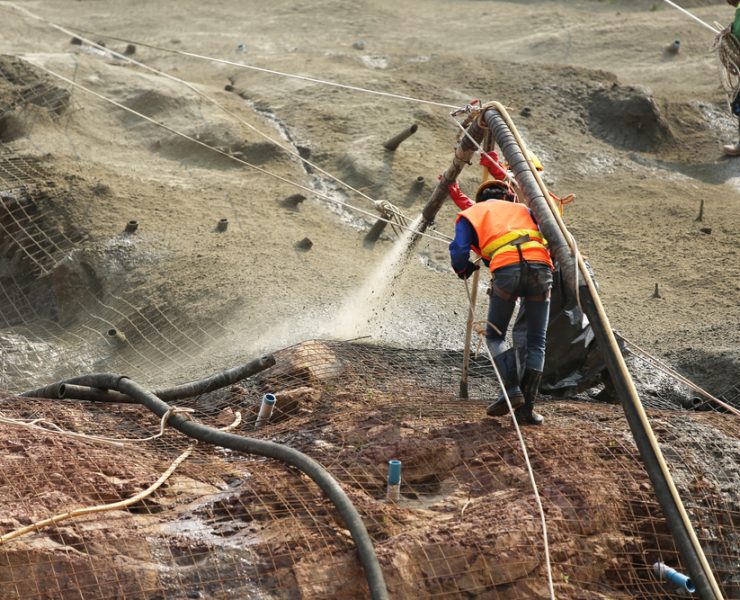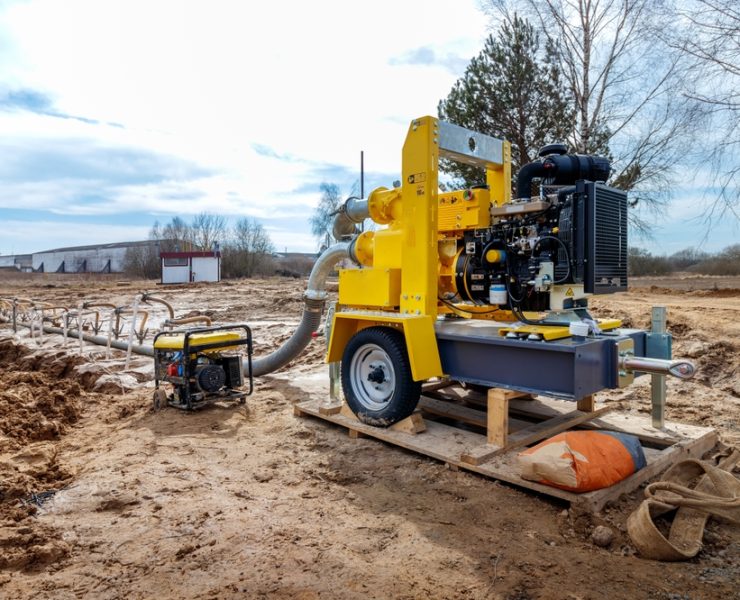Placement and Design of Concrete in Drilled Shaft Construction: Part 2
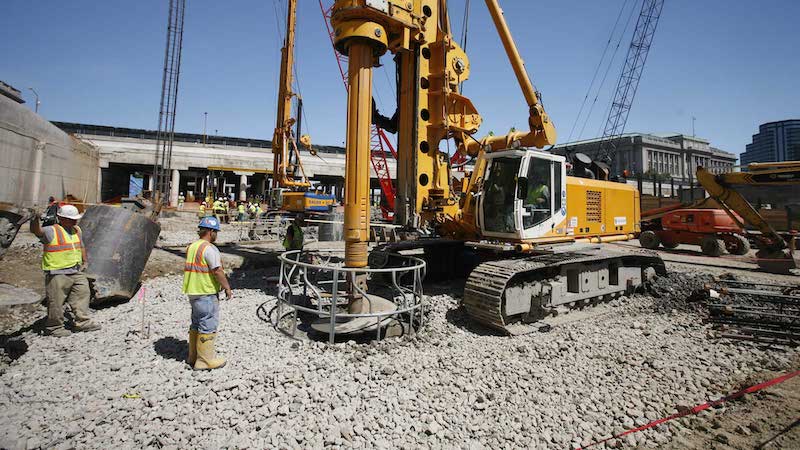

View part 1 of this article here.
Concrete Mix Design
To met the structural requirements of a drilled shaft construction project, a concrete mix must be designed with the requisite properties. The 9 characteristics of concrete for drilled shaft construction, described above, primarily related to the workability of the mixture. There are various components and procedures that can be used to ensure a proper concrete mix for drilled shaft construction.
Cementitious Materials
Typically, Portland cement (Type I or Type I/II) is used for the design of concrete drilled shafts. Type III Portland cement should be avoided, as it is a high-early-strength cement that has high heat of hydration potential, particularly in large diameter shafts. In environments where the sulfate content of the soil or groundwater is extremely high, special sulfate-resistant cements should be considered, such as Type II and V Portland cement. The availability of Type V cement may be limited; instead, supplementary cementing materials may be used to increase sulfate resistance.
Supplementary cementing materials (SCMs) can be added to Portland cement to improve the durability and strength of drilled shaft concrete. SCMs may include by-products such as fly ash, slag cement and silica fume. Class F fly ash and silica fume are pozzolanic materials that possess little strength on their own, but when mixed with Portland cement, they form cementing materials. Class C fly ash exhibits both hydraulic and pozzolanic behavior, giving it more rapid strength development than Class F fly ash.
Slag cement may be used to replace between 30 to 50 percent of Portland cement by weight, after being ground to the desired fineness. It is specified according to the ASTM C 989, which provides for three grades depending on its reactivity index (a measure of relative 28 day mortar strength from a 50-50 slag cement-cement blend compared to a pure Portland cement mortar). Slag cement is a latent hydraulic material, with particles that are usually ground to a size that is slightly finer than Type I Portland cement. It is more sensitive to curing temperature than Portland cement, and will require extending setting times in cold weather conditions.
Silica fume consists of very fine particles that significantly increases the water demand of the mixture, necessitating the use of a high-range water reducing admixture to obtain the desired degree of workability. It reacts at early stages and typically contributes to increased early age and long-term strengths, as well as decreased long-term permeability. Rich in silicon dioxide, silica fume mixes with the lime in Portland cement to produce a cement paste that is strong and denser than that produced by using other SCMs or Portland cement alone. However, it is more expensive than fly ash or slag cement.
Both fly ash and silica fume tend to reduce the amount of bleeding experienced by the concrete. Fly ash, silica fume and slag cement will all have an effect on the rate of strength and stiffness development in drilled shaft concrete, with slower strength development for flay ash or slag cement and increased strength development with silica fume.
For contractors, the advantage of using SCMs with Portland cement is that they convert calcium hydroxide to calcium silicate hydrate over time. This is the most dense and desirable hydration product when Portland cement hydrates, which leads to increased long-term strength, reduced long-term permeability and an improvement in long-term durability.
SCMs also tend to retard the set of the cement paste, which increases workability. Fly ash will reduce the water demand of a mixture, while slag cement will increase water demand. Understanding the properties of each SCM will help contractors design the best mixture for their project.
Chemical Admixtures
Chemical admixtures can be used to improve workability, strength and other properties of concrete for drilled shaft construction. Ideally, contractors should consult with chemical admixture companies to determine the proper admixture type and dosage for a project, given the materials and placement conditions.
Most chemical admixtures are furnished in a ready-to-use liquid form. The successful use of these admixtures is dependent on the methods of preparation and batching, with dispensing carefully controlled and routinely inspected.
Air-entraining admixtures can be used to introduce and stabilize entrained air bubbles in concrete. These admixtures can be used in drilled shaft concrete placement when freeze-thaw action may deteriorate the concrete. An air-entraining admixture will also improve workability and pump-ability, as well as reduce concrete bleeding. However, this admixture also increases concrete porosity, which reduces overall strength.
Set-controlling admixtures (also known as retarding or hydration stabilizing admixtures) may be required to improve workability. Made of lignin, borax, sugars, tartaric acids and salts, this admixture is often used in large placements or when concrete is placed during periods of high temperatures to reduce slump loss. This gives the contractor with a sufficient period of time to work with the temporary casing and tremie-placed concrete, with the general rule being that this period should be two hours more than the time estimated by the drilled shaft contractor to finish concrete placement and remove the temporary casing. The use of excessive set-controlling admixtures can affect long-term concrete strength.
Hydration stabilizing admixtures (extended-set control admixtures) are a newer type of admixture that can be used to stabilize the hydration of Portland cement, extending the time it takes for it to reach its initial set. Once the effect of the admixture wears off, hydration will resume as usual, with no impact on strength of the concrete. This type of admixture is generally more effective in controlling the time set of drilled shaft concrete than traditional set-controlling admixtures.
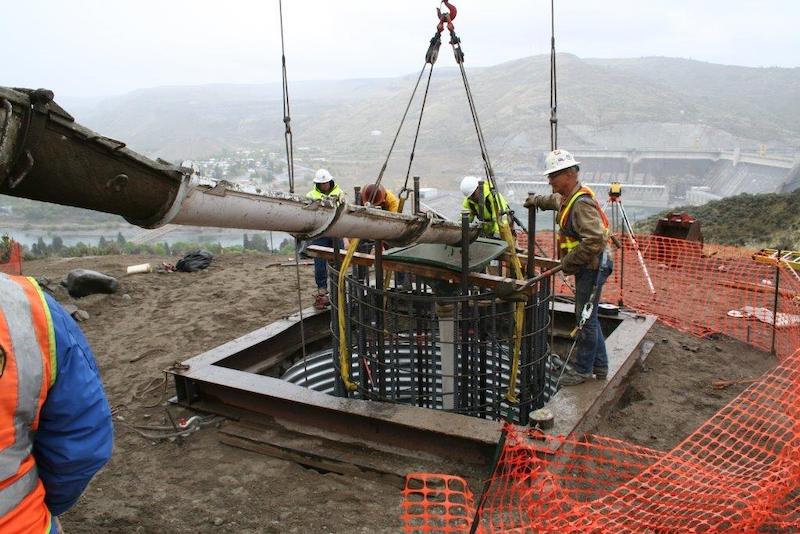
The dosage of a set-control admixture should be established based on the ambient temperature conditions as well as the concrete temperature at placement. In addition, the haul time from the concrete plant to the construction site should be estimated to determine the most suitable admixture type and dosage. Higher dosages of set-control admixture will be required in warm weather conditions. Trial placements should be performed to test the required dosage of admixture, with samples retained to determine its workability retention characteristics.
Accelerating admixtures are admixtures that cause an increase in the rate of hydration in cement, leading to a decreased setting time and/or an increased rate of strength development. They should generally not be used in drilled shaft construction except in extraordinary situations. Concrete specialists should be consulted if the use of accelerators is contemplated, and clean-up should be a priority on the project, before setting occurs.
Water-reducing admixtures reduce the water requirements of a concrete mixture for a given slump by reducing the surface tension of the water surrounding the cement particles before the concrete begins to set. This increases the workability of the fluid concrete without the need for excessive water. There are three main types of water-reducing admixtures: low-range water reducing admixture (reduces water by 5 to 10%); mid-range water-reducing admixture (reduces water by 6 to 12%); and high-range water-reducing admixture (reduces water by 12 to 30%).
To achieve workability for drilled shaft construction without water-reducing admixtures, a mix of Portland cement and SCMs must be used that will lead to many pores in the concrete, producing a permeable, weak concrete. With a water-reducing admixture, the ratio of the cement-SCM mixture can be changed, allowing for a denser and less permeable cement paste with excellent fluidity.
High-range water-reducing admixtures (known as superplasticizers) may experience a rapid loss of consistency, which is undesirable in large placement. They also may cause rapid setting, particularly in hot weather placements. For this reason, contractors should test the mix at the ambient temperature at which the concrete is to be placed to ensure that it does not produce undesirable slump loss effects.
Viscosity-modifying admixtures may be used with other mixtures to reduce segregation and bleeding in concretes. They may also improve the effectiveness of self-consolidating concrete mixtures, as they bind some of the free water that may impact workability. They work by binding excess water in the mixture, increasing the cohesiveness and viscosity of the concrete. They can be effective at binding up free water before the concrete sets.
Other types of chemical admixtures may be useful in special situations. These may include anti-bacterial and anti-fungal admixtures, alkali-reactivity reducers, corrosion inhibitors, and pumping aids. Other than pumping aids, these types of admixtures are infrequently used in drilled shaft construction.
Aggregate and Water
In addition to cementitious materials and admixtures, aggregates and mixing water are used in making a concrete water. Aggregates normally consisted of natural materials, such as gravel, sand and crushed stone. These materials are typically stronger and less permeable than hydrated cement paste. According to conventional wisdom, the largest aggregate should be as large as possible, and the aggregate should be well-graded to minimize the amount of paste in the mix. At the same time, the concrete should be designed so that it can fall freely through some distance or flow freely through rebar in the cage.
Given these considerations, relatively small, coarse aggregate should be used. The size of the aggregate may range from 3/8 to 3/4 inch, with spherical particles preferred to oblong shapes. Good graduation down to smaller sizes is an important characteristic, with all aggregate checked to ensure that the appropriate specifications are met. This includes making sure that the aggregates will not expand when exposed to Portland cement, which may be accomplished through the concrete prism test or the mortar bar test.
Water used for mixing the concrete does not have to be potable, but any natural water that is drinkable can be used for mixing concrete. It should have low chloride and sulfate contents.
Workability
As discussed above, one of the most important characteristics for concrete to be placed in drilled shaft construction is workability. This is vital due to the need for the concrete to self-consolidate and to flow through the reinforcing cage without the use of vibration. It also must remain workable in tremie operations until the entire placement is complete and the temporary casing is removed.
To measure the workability of concrete, the slump test is most often utilized. For drilled shafts, concrete should have a slump of 6 inches or higher for the dry method, and approximate9 inches when the wet or casing methods are used. While the slump method is not an ideal test, no other test is generally accepted for field use.
High workability can be achieved with rounded natural aggregate and natural sand. Crush stone is being used more frequently, as other supplies of other natural aggregates are dwindling. The use of crushed stone will require either higher paste content or increased dosages of water-reducing admixture to attain workability. In addition, care must be used to wash away the dust from crushed stone, as the dust can use up water that would normally be used for the hydration of the concrete mixture.
Self-consolidating concrete (SCC) is highly flowable concrete that can spread into place, fill the formwork and encapsulate the reinforcement without consolidation without segregation. SCC mixes offer greater workability than the type of concrete typically used for drilled shaft construction. However, it is not generally used or drilled shaft construction in North America, with a few exceptions, such as the Mullica River Bridge on the New Jersey Turnpike and the B.B. Comer Bridge over the Tennessee River in Scottsboro, Alabama.
Instead, the concrete traditionally used in drilled shaft construction has been designed using conventional concrete mixed with water and/or high-range water-reducing admixtures. SCC mixtures are generally designed for use in projects that require greater workability than conventional drilled shaft construction.
Nevertheless, SCC mixtures developed specifically for drilled shaft construction can be used. These mixes have a higher sand to aggregate ratio, with increased cementitious materials content (with large dosages of SCMs). This helps to delay setting and reduce the maximum in-place concrete temperatures. Overall, this results in high flowability, increased stability and reduced bleeding.
 Control of Concrete Temperatures
Control of Concrete Temperatures
To control setting time and the heat of hydration, control of temperature during concrete placement is very important. Excessive temperatures will accelerate the rate of hydration and reduce the concrete’s workability, producing more rapid setting. This effect increases dramatically with temperatures above 70 degrees.
In addition to more rapid setting, high heat of hydration is a potential concern for drilled shaft concrete with shafts larger than 5 feet in diameter. This can cause internal expansion in the cement paste, micro cracking and ultimately, severe cracking. The use of sufficient amounts of fly ash or slag cement will help to mitigate the effects of this issue (delayed ettringite formation).
In place-temperatures can be controlled in three ways: (1) limiting the total cementitious materials content; (2) controlling the fresh concrete placement temperature; and (3) proper selection of the cementitious material types. First, while the amount of total cementitious materials can implicate design compressive strength, concrete design stresses are often low in drilled shafts. The use of additional Portland cement is generally not recommended in order to reduce the potential for rapid setting time and high heat of hydration.
Next, temperature controls at the batch plant can be achieved by substituting some of the mixing water with ice, or with liquid nitrogen thermal probes to cool the concrete in the truck. Finally, using Type II cement with high dosages of Class F fly ash and/or cement slag can help to control heat of hydration as well as delayed ettringite formation.
Mixture Proportions
When it comes to achieving a target set of concrete properties (workability, workability retention, strength and permeability), the proportions of water, cement, supplementary cementing materials, chemical admixtures and aggregate should be determine on a case-by-case basis. Contractors should use a qualified concrete laboratory to perform a trial mixture testing and evaluation, verifying that the conditions that existed in the trial mixture tests continue to exist during construction. If conditions change, then new trial mixture studies should be conducted.
A trial mixture study should include testing to include a graph of slump loss versus time after batching. A desirable slump loss relationship includes one in which slump reduces slowly and still exceeds 4 inches four hours after batching. Slump loss test should be performed at the approximate temperature at which concrete will exist in the field.
In addition to workability, contractors must also consider durability. Soil and groundwater contaminants may cause deterioration of the concrete overtime. SCMs and specialty cement mixtures can increase durability and prevent corrosion of rebar within the cement and deterioration of the cement itself.
In aggressive site conditions, a mixture of reduced permeability may be preferred. This can be achieved by adding SCMs to the mixture. Aggressive subsurface environments may exist where the soil, rock or groundwater has free oxygen and/or carbon dioxide, high concentrations of sulfates or chlorides or is acidic.
Communication of Project Specific Requirements for the Concrete
To ensure that the specific project requirements are met, contractors should clearly define the parameters of their concrete needs to suppliers during the bid stage. This will allow concrete producers to place a bid on a mixture that satisfies all project performance requirements, and bid in accordance with the needs of the project. This allows the contractor to make a realistic budget for concrete placement in drilled shaft construction.
In some drilled shaft projects of relatively small diameter and depth, a standard concrete mixture that has worked well in the past may be used. However, a more complex project — such as one that requires a deep shaft or a large diameter shaft — will require additional resources for pre-testing the concrete mixture.
The specific project performance criteria should be clearly defined in the project bid documents so that cost and time allowances can be made by both the contractor and concrete producer for testing during the development of the mixture. The contractor must communicate all relevant conditions that may impact the concrete mix, including anticipated handling and placement methods, estimated duration of concrete transportation and placement, and anticipated ambient temperature conditions. In turn, the concrete producer must be willing to collaborate with the contractor to develop a mixture that can meet the project requirements.
Strength
The strength of a drilled shaft concrete is typically specified by its 28-day compressive strength, as tested on 6-inch diameter by 12-inch high cylinders. A mixture for a filled shaft will be adequate if it produces 28-day compressive cylinder strengths between 3,500 to 4,000 psi. In some conditions, higher strength concrete may be useful, such as wen a designer wants to reduce the cross-sectional area of the drilled shaft.
Concrete design strengths of 6,000 psi are often used in areas of high seismic activity. They can be achieved through a mixture of lower water to cementitious material values to produce a concrete that is less permeable. This results in a concrete with a reduced setting time and higher in-place temperatures.
Concrete Tests
Testing is a necessary component of the use of concrete in drilled shaft construction. As discussed below, it will likely occur at various stages of the construction process, from initial mixture approval through concrete placement.
Testing to Obtain Mixture Approval
The initial testing of concrete should be performed during the development of a concrete mixture. This will provide some indication of concrete performance during placement. These tests can be developed under laboratory conditions or by a concrete batch plant. In very large projects, it is not unusual to evaluate more than 30 mixtures before a final mixture is selected. It is also common to develop trial mixtures at 3 different water/cementitious mixture values to obtain the mix that produces the required compressive strength for the project. During this process, the slump, fresh concrete temperature, total air content (if required) and cylinder samples for later strength testing should be performed.
The final step of trial batching involves the construction of a full-scale technique shaft to evaluate the performance of the selected mixture when batched in the concrete producer’s batch plant and placed by the contractor. Ideally, the conditions should reproduce the conditions that will exist at the time of placement. The placement characteristics, fresh concrete properties, strength, permeability and other features should be assessed.
Tests at the Batch Plant
In most drilled shaft construction projects, the concrete is supplied by ready-mix plants. However, for some large projects, a batch plant may be used at the job site. This setup gives the contractor control over the schedule, particularly with regard to concrete delivery and problems with an off-site plant.
Regardless of where the plant is located, tests are necessary to ensure that there are no errors in the mixture production. This can include checking for the nature and quantity of components of the mixture, the aggregates, cementitious materials, water and chemical admixtures. Inspectors should also check the temperature of the components and of the completed mixture to ensure conformance with the specifications.
Tests at the Job Site
Tests at the job site should be performed as efficiently as possible for two reasons. First, excavations should be open for as short of a period a time as possible to reduce the chance of creep and caving in of the soil or rock. Second, the concrete should be placed as quickly as possible to ensure workability. For these reasons, batch-plant inspection and the timely ordering and delivery of concrete should be prioritized. The contractor should also make sure that there is sufficient concrete at the job site or in transit so that the entire pour can be completed as continuously as possible without delay.
Job site inspection should be conducted so that unacceptable concrete is not placed in the drilled shaft. At a minimum, temperature, slump, total air content (if required) and cylinder samples for later strength testing should be taken. If working for a state agency, there may be specific rules for the frequency of sampling.
As many projects require placement by gravity tremie or pump, the concrete that arrives first is normally what is placed first. As such, in large pours, the workability should be sampled and periodically tested from the first load placed in the shaft. This should generally be done at the point of discharge into the tremie or pumpline. It should then be stored in a sealed container that is not exposed to direct sunlight or vibration, and stored at similar temperatures to those that exist deep in the ground at the construction site. Prior to testing for workability, the concrete should be slightly agitated with a shovel.
Addition of Water at Job Site
If a slump is too low, it will often be rejected. This may raise the question of adding water to concrete in a ready-mix truck, which will increase workability, but reduce the strength and durability of the concrete. Adding water at a job site can significantly change the characteristics of the concrete mixture and increase the possibility of segregation.
In some situations, only part of the mixing water is added at the batch plant, with the intention of adding it at the job site. If the ready-mix truck has a way to accurately measure the volume of water added on site, then the water can be added. If the slump is still not high enough, then the inspector must note this, and inform the contractor, who must make a decision of whether to add water or order new concrete. Neither option is ideal, but the contractor may not have a choice if the concrete lacks workability and cannot be placed in its present state.
Conclusion
In drilled shaft construction, the proper placement of concrete is one of the most crucial aspects. Correctly designing and placing concrete will ensure a structurally sound drilled shaft foundation. From developing a concrete mix to placing the concrete, the process can be challenging. But for contractors working in drilled shaft construction, understanding this aspect of the process is fundamental to the successful completion of a project.
Reference(s):
Federal Highway Administration – NHI Course No. 132014
View part 1 of this article here.
Why concrete needs workability to be placed in drilled shaft construction?
Workability is vital due to the need for the concrete to self-consolidate and to flow through the reinforcing cage without the use of vibration. It also must remain workable in tremie operations until the entire placement is complete and the temporary casing is removed.
How to measure workability of concrete?
The slump test is most often utilized. For drilled shafts, concrete should have a slump of 6 inches or higher for the dry method, and approximate9 inches when the wet or casing methods are used. While the slump method is not an ideal test, no other test is generally accepted for field use.














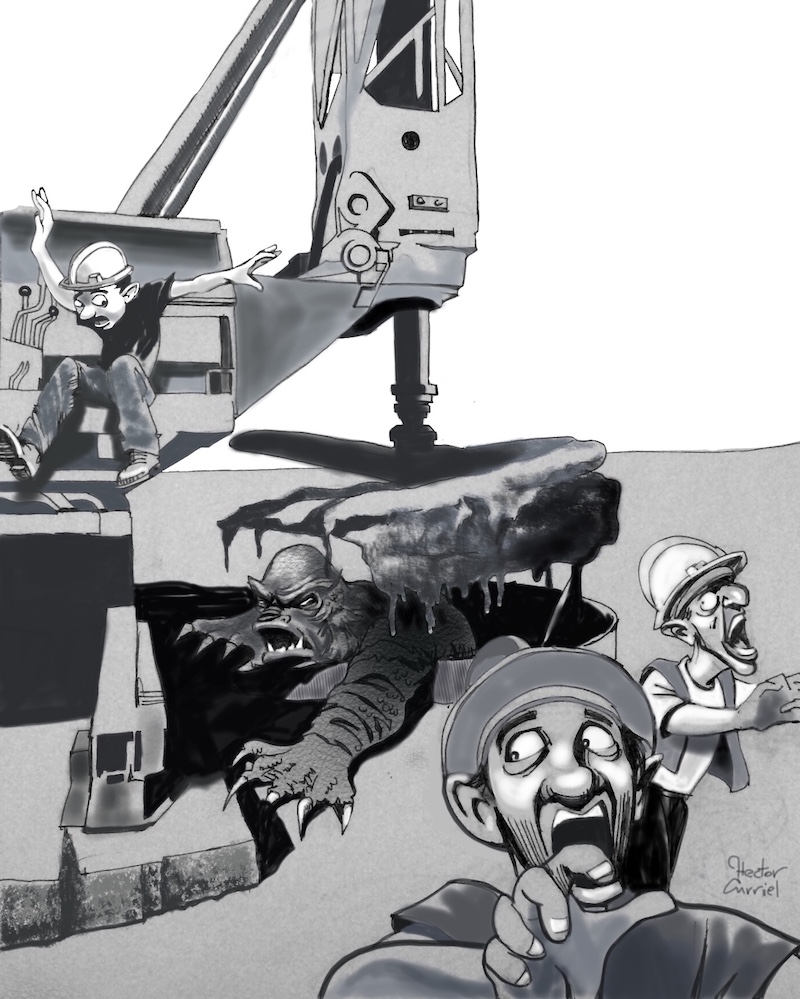 Control of Concrete Temperatures
Control of Concrete Temperatures
